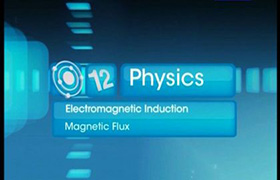JEE Class main Answered
hc Verma solutions

Asked by mlakshmi22872 | 01 Mar, 2021, 19:24: PM
Part (a)
F = k x
where F = 10 N is applied force , k = 100 N/m is spring constant and x is compressed distance .
Compressed distance x = F / k = ( 10 / 100 ) = 0.1 m
----------------------------------
Part (b)
Potental energy U = 0
Kinetic energy K = (1/2) m v2 = 0.5 × 1 × 2 × 2 = 2 J
where m is mass and v is speed of mass at the instant it was struck
Sum of potential energy and kinetic energy , U + K = 2 J
------------------------------
Part (c)
Angular speed ω is given as

where T is period of oscillation

----------------------------------------------
Part (d)
Amplitude a is determined from maximum potential energy that equals maximum kinetic energy .
Maximum kinetic energy is 2J as calculated from part (b)
(1/2) k a 2 = 2 J
a = { 4 / k }1/2 = { 4/ 100 }1/2 = 0.2 m
-------------------------------------------------------------
Part (e)
Potential energy at left extreme is maximum potential energy Umax
Umax = (1/2) k a2 = (1/2) × 100 × 0.2 × 0.2 = 2 J
----------------------------------------------------------
Part (f)
Potential energy at right extreme is maximum potential energy Umax
Umax = (1/2) k a2 = (1/2) × 100 × 0.2 × 0.2 = 2 J
------------------------------------------------------------------
Answer to Part (b) is total energy of oscillating spring-mass system.
Answer to Part (e) and (f) are maximum potential energy at maximum displacement
In Part (b) potential energy is zero . In part (e) and part (f) kinetic energy is zero .
All of them are maximum energy of the system and they are same not different.
There is no violation of conservation of energy
Answered by Thiyagarajan K | 02 Mar, 2021, 10:19: AM
Application Videos
Concept Videos
JEE main - Physics
Asked by sumalathamadarapu9 | 23 Oct, 2024, 22:06: PM
JEE main - Physics
Asked by py309649 | 13 Oct, 2024, 13:39: PM
JEE main - Physics
Asked by coolskrish | 13 Oct, 2024, 12:50: PM
JEE main - Physics
Asked by midnightmoon3355 | 09 Oct, 2024, 09:09: AM
JEE main - Physics
Asked by rambabunaidu4455 | 03 Oct, 2024, 16:03: PM
JEE main - Physics
Asked by ratchanavalli07 | 17 Sep, 2024, 07:46: AM
JEE main - Physics
Asked by yayashvadutta45 | 15 Sep, 2024, 19:47: PM
JEE main - Physics
Asked by adithireddy999 | 03 Sep, 2024, 09:35: AM
JEE main - Physics
Asked by vaishalinirmal739 | 29 Aug, 2024, 18:07: PM
JEE main - Physics
Asked by vradhysyam | 26 Aug, 2024, 17:17: PM










